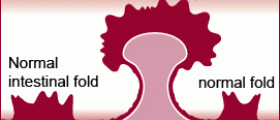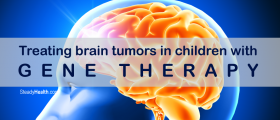
Benign lesions of the gastric wall are also known as benign gastric tumors. These non-malignant growths are easily seen with the assistance of modern techniques and gastric endoscopy. If needed, doctors are able to obtain some of tumor's tissue by polypectomy or biopsy and study it further.
About Benign Gastric Tumors
Any of the layers of the stomach wall can produce some benign tumors. Approximately 60% of all benign gastric tumors are non-mucosal, while in the rest (40%) of cases lesions of the stomach are mucosal. Luminal lesions above the surface of mucosa layer of the stomach are known as gastric polyps. These growths are frequently found in routine practice and can be both neoplastic and non-neoplastic in nature, as well as associated with polyposis syndrome.
The cause of benign lesions of the stomach depends on the type of the tumor. When it comes to physical findings, these are usually nonspecific. For instance, some conditions characterized by plenty of gastrointestinal tumors such as Peutz-Jeghers syndrome may additionally lead to abnormal pigmentation of the lips, digits and oral mucosa. In some cases, doctors may feel the mass in the abdomen, which could provoke pain and tenderness in this area.
Benign gastric tumors affect all people regardless their race, but some types might be differently distributed in men and women, as well as in people of different age.
Symptoms and Signs
Benign stomach tumors are rare, usually found during an endoscopy exam performed due to some other medical problem. In general, almost 90% of all benign gastric tumors are polyps, which further induce inflammation, erosion or, in rare occasions, bleeding. Small tumors are commonly asymptomatic. However, patients with larger tumors may experience ulcerations leading to occult bleeding and consequent anemia.
Some patients with large distal lesions may have symptoms of gastric outlet obstruction, such as nausea, early satiety or vomiting. Ulcerated tumors may cause epigastric pain resembling pain associated with peptic ulcers. Most benign gastric tumors do not cause any symptom beside rare epigastric pain, bleeding or gastric outlet obstruction, as mentioned earlier. Gastrointestinal stromal tumors may be benign or malignant, while only adenomatous polyps have truly neoplastic behavior and malignant potential.
Possible Treatment Options
Gastrointestinal stromal tumors are probably the only type of these benign gastric tumors which can be treated medically. The tumor has certain receptors (KIT - tyrosine kinase receptor). Imanitib mesylate or Gleevec is the drug targeting these receptors. This medication is commonly used before surgical resection in order to decrease the tumor.
Different types of gastric polyps are commonly treated by some surgical procedures.

















Your thoughts on this
Loading...